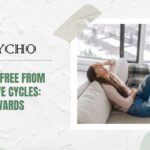Schizophrenia and schizoaffective disorder share symptoms. They also differ in symptoms, diagnosis, and treatment. Schizophrenia is a serious mental condition with many symptoms that impact thinking, feeling, and behavior. Schizophrenia symptoms include hallucinations, delusions, disordered thinking, speech issues, and decreased emotional expressiveness. These indicators might make it hard to work and socialize. Schizophrenia affects thinking and perception, not emotion.
Schizoaffective disorder, on the other hand, combines schizophrenia with a mood condition like depression or bipolar disorder. It causes hallucinations, delusions, muddled ideas, and mood changes. Psychotic episodes like nightmares and erroneous beliefs occur with sad or mad mood episodes. Schizoaffective disorder, unlike schizophrenia, is characterized by mood symptoms that affect a person’s mood and functioning.
The schizoaffective disorder requires a significant mood episode (depression or mania) and schizophrenia symptoms. Schizophrenia’s secondary mood indicators distinguish it from schizoaffective disorder. These diseases are treated differently. Schizophrenia is usually treated with antipsychotics, psychotherapy, and support. Schizoaffective illness requires mood stabilizers, antidepressants, and antipsychotics because of its mixed nature.
Schizophrenia and schizoaffective disorder overlap similar symptoms but have different core symptoms and diagnoses. Schizoaffective illness has mood swings and schizophrenia symptoms. A professional mental health provider must correctly diagnose each patient to determine the appropriate treatment. People can obtain the best therapies for their symptoms and quality of life by concentrating on these conditions.
Also Read: What Clinical Psychologists Do Professionally
|
S.No. |
Aspect |
Schizophrenia |
Schizoaffective Disorder |
|
1. |
Diagnostic Category |
Schizophrenia Spectrum Disorder |
Schizophrenia Spectrum Disorder |
|
2. |
Core Symptoms |
Hallucinations, Delusions, Disorganized Speech |
Hallucinations, Delusions, Disorganized Speech |
|
3. |
Mood Component |
Secondary, mood symptoms are not prominent |
Mood symptoms are primary and prominent |
|
4. |
Mood Disorders |
Not necessary but can coexist |
Necessary (Depressive or Bipolar) |
|
5. |
Duration |
Continuous symptoms for 6 months or more |
Similar to schizophrenia, plus mood episodes |
|
6. |
Mood Episode Duration |
N/A |
Required for diagnosis |
|
7. |
Diagnosis |
Schizophrenia diagnosis without mood symptoms |
Schizophrenia diagnosis + Mood disorder diagnosis |
|
8. |
Subtypes |
Paranoid, Disorganized, Catatonic, etc. |
Depressive Type, Bipolar Type, Mixed Type |
|
9. |
Prognosis |
Variable, but tends to be chronic |
Variable, may depend on mood disorder |
|
10. |
Treatment Approach |
Combination of antipsychotics and mood stabilizers |
|
|
11. |
Symptom Fluctuation |
Symptoms may remain relatively stable |
Symptom fluctuations due to mood episodes |
|
12. |
Impairment |
Impairs social, occupational functioning |
Impacts both mood and psychotic symptoms |
|
13. |
Mood Disorder Criteria |
N/A |
Criteria for Major Depressive or Bipolar Disorder |
|
14. |
Schizophrenia Criteria |
Presence of hallucinations, delusions, etc. |
Presence of schizophrenia symptoms |
|
15. |
Mood Episodes |
Not required for diagnosis |
Required for diagnosis |
|
16. |
Psychotic Symptoms |
Central to the diagnosis |
Coexist with mood symptoms |
|
17. |
Cognitive Symptoms |
Often present, including impaired cognition |
Similar cognitive symptoms as schizophrenia |
|
18. |
Genetic Factors |
Genetic predisposition plays a role |
Genetic factors can contribute |
|
19. |
Onset |
Adolescence to early adulthood |
Late adolescence to early adulthood |
|
20. |
Reality Distortion |
Prominent reality distortion (hallucinations) |
Reality distortion + Mood symptoms |
|
21. |
Functional Decline |
Often observed over time |
Can vary based on mood disorder presence |
|
22. |
Hallucination Types |
Auditory hallucinations common |
Similar types as in schizophrenia |
|
23. |
Delusion Themes |
Similar themes as in schizophrenia |
Similar themes as in schizophrenia |
|
24. |
Mood Stabilizers |
Not a primary treatment |
Central to managing mood symptoms |
|
25. |
Depressive Symptoms |
Often secondary to psychosis |
Primary and part of diagnostic criteria |
|
26. |
Bipolar Symptoms |
Not a focus of diagnosis |
|
|
27. |
Cognitive Impact |
Cognitive deficits common |
Cognitive deficits + mood-related impairment |
|
28. |
ECT (Electroconvulsive Therapy) |
Used for severe cases |
Used when mood symptoms are severe |
|
29. |
Distinct Episodes |
Not a defining feature |
Distinct mood episodes |
|
30. |
Schizophrenia Medications |
Focus on antipsychotics |
Combination of antipsychotics and mood stabilizers |
|
31. |
Mood Disorder Treatment |
Mood stabilizers, therapy for mood symptoms |
Antipsychotics + Mood stabilizers + Therapy |
Also Read: 40 Difference Between Epilepsy and Hysteria
Frequently Asked Questions (FAQs)
Q.1 What is the main difference between schizophrenia and schizoaffective disorder?
Hallucinations and delusions are the main symptoms of schizophrenia, not mood changes. Schizophrenia and mood episodes are combined in schizoaffective disorder. The schizoaffective disorder differs from schizophrenia due to mood symptoms.
Q.2 How can one distinguish between psychotic symptoms in schizophrenia and schizoaffective disorder?
Mood episodes distinguish. Schizoaffective disorder causes mood swings, hallucinations, delusions, and disordered thinking. Cognitive and perceptual problems precede mood disorders in schizophrenia. Accurate diagnosis requires a thorough mental health professional examination.
Q.3 What treatments are available for these disorders?
Both conditions require medicine and therapy. Antipsychotics and psychosocial therapies help manage schizophrenia. Schizoaffective illness commonly requires antipsychotics and mood stabilizers. Both diseases require therapy, counseling, and support.
Q.4 Can these patients live normally?
Schizophrenia and schizoaffective disorder patients can thrive with therapy and care. Many people recover from chronic diseases. Early intervention, medication adherence, counseling, and a supportive network improve long-term results.
Q.5 Is there a genetic link to these disorders?
Schizophrenia and schizoaffective disease are hereditary. A family history of certain illnesses may increase risk. Genetics is simply one element; environmental factors, brain chemistry, and life experiences also contribute to many diseases. Environmental and genetic factors may cause these illnesses.









